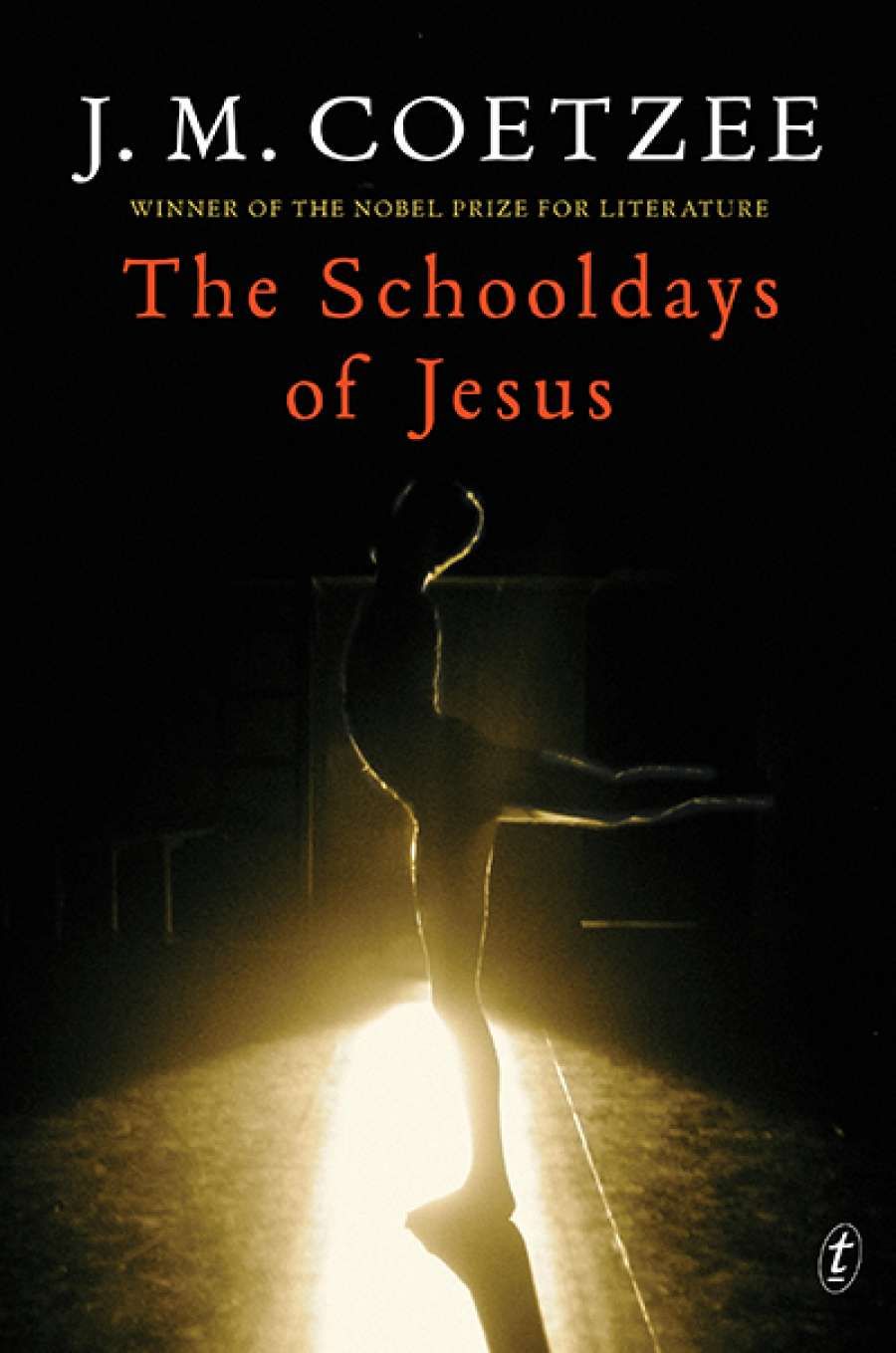
- Free Article: No
- Contents Category: Fiction
- Custom Article Title: Sue Kossew reviews 'The Schooldays of Jesus' by J.M. Coetzee
- Custom Highlight Text:
In order to grasp the complexity of allusions in J.M. Coetzee's new novel, The Schooldays of Jesus, you need to have your wits about you. On the other hand, as with its prequel ...
- Book 1 Title: The Schooldays of Jesus
- Book 1 Biblio: Text Publishing, $34.99 hb, 288 pp, 9781925355789
It is hard to resist the temptation to draw parallels, particularly when the text invites such a reading albeit without ever confirming it. There is, for example, a wonderfully redolent scene at the beginning of the novel where David tries to save a duck that has been hit by a stone thrown ('cast') by one of the 'tribe' of boys with whom he has been playing. This leads to a 'lesson' about repentance, conscience, and resurrection, culminating in the discovery of the duck's almost empty grave the next day, emphasising the incident's parable-like significance. These possible equivalences – which may or may not be significant – permeate the text in a kind of cat-and-mouse game between writer and reader.
Counting and numbers are integral to the narrative. Now that he is six, the precocious and wilful boy, who has been named David but who continues to insist that this is not his 'true' name, has to be educated. Having escaped, in The Childhood of Jesus, from the special school for delinquents and wards of state to which the authorities in Novilla had sent him, the question of how and where to school David arises again in Estrella. The story is concerned with different models of learning and knowledge David encounters: mathematics, as taught by his first tutor, señor Robles, who believes that 'every object in the world is subject to arithmetic', is set against the mysterious numerology taught through dance and music at the Academy of Dance, where señora Arroyo 'calls down' mystical numbers from the stars for the children to dance. It is clearly no coincidence that the names of the Arroyos, the husband and wife who run the Academy, are Ana Magdalena and Juan Sebastian, Spanish equivalents for J.S. Bach and his second wife.
The novel includes discussion of different approaches to educating children that is reminiscent of Dickens's Hard Times: in particular, the age-old battle between reason (Gradgrind's 'Facts') and the imagination. In Coetzee's The Schooldays of Jesus, the new 'metric science' attributed to a mathematician called Metros is pitted against an older mode of human and animal understanding, arising from the ancient body-mind nexus represented by 'music-dance'. David's own dancing, in his performance at the end of the novel, has him 'become pure light' that is 'neither body nor spirit'. Simón himself (or 'he, Simón' as he is referred to throughout), who characterises himself as 'the danceless one' and is unable to fully grasp the mysteries of the dance, potentially has his own moment of enlightenment, though this remains unresolved.
The clash between the imagination and the real, as it is thematised in Cervantes' Don Quixote, was central to David's idiosyncratic way of learning to read in The Childhood of Jesus. In this follow-up novel, both David and Simón still use Cervantes' text as a touchstone. Indeed, the epigraph to The Schooldays of Jesus is taken from Book II of Don Quixote and given in Spanish: 'Algunos dicen: Nunca segundas partes fueron buenas'. It translates as: 'Some say: sequels are never as good.' In Cervantes' text, this is a self-parody (it occurs in a discussion about the author's motivation for the writing of Book II as profit rather than praise). Used here, it is a doubly self-referential joke, humorously anticipating a critical response to the novel as sequel whilst also acknowledging the enduring influence of Cervantes' complex narratology and metafictional humour.
 J. M. Coetzee
J. M. Coetzee
Of equal interest to Coetzee is the notion of a moral education that deals with issues of crime and punishment. It is no surprise, then, to find intertextual allusions to that other great novelist, Dostoevsky, whose works, like Cervantes' and Defoe's, permeate Coetzee's oeuvre. In The Schooldays of Jesus, the unsettling character of Dmitri and that of the young man, Alyosha, bear the marks of Dostoevskyan protagonists (both names are from The Brothers Karamazov), as does its startling climax. Dostoevskyan themes of passion, guilt, confession, retribution, and forgiveness are threaded through the story.
Intrinsic to the narrative is the crucial connection between arts and sciences, music and mathematics, passion and reason. The novel itself provides a compelling model for rethinking the dualism that led to the separation of these disciplines and the perceived neglect of the 'training of the soul'.
The Schooldays of Jesus is both a moving story of a young boy's formal and worldly education and a complex narrative that engages with big philosophical ideas. It confirms Coetzee's status as one of the world's great living writers, one whose work poses important questions without imposing simple answers. Already deservedly long-listed for the 2016 Man Booker prize, The Schooldays of Jesus is, like his other novels, clever, intriguing, and witty whilst also being thought-provoking, literary, and elusive. Simón's wry comment to David, after shielding him from being counted in the census – 'Congratulations, David. You have escaped again' – could well apply to any attempt to pin down meaning in the novel. The possibilities for interpreting its many layers are seemingly endless. Some readers may find the inconclusiveness frustrating, but, for devotees of Coetzee's work, this novel provides another rich and rewarding reading experience.


Comments powered by CComment